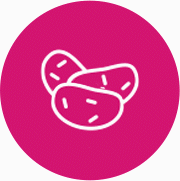- UA
- EN














The systemic insecticide of contact-intestinal action against a wide range of pests, which provides a long-lasting protection period.


Active Fraction Content Idacloprid, 700 g/kg


Chemical Group Neonicotinoids


Preparative Form Water-soluble granules


WHO Classification III class (Moderate toxicity substance) Toxic for bees.
The preparation affects adults and larvae at all stages of development.
Pests die shortly after it has been applied.
It provides control within a long period.
It remains to be effective at high temperatures and strong solar radiation when insecticides of other classes are less effective.
It provides protection of young shoots and leaves that grow back after treatment.

The preparation has good control of such major pests as aphids, whitefly, thrips, parlatorias or armoured scales, bugs, weevils, wireworms, ground beetles, leaf beetles, leaf miners, termites, locusts or grasshoppers, and others.

Insecticide-based on imidacloprid, due to its contact-intestinal properties, causes damage to the nervous system of adult insects and their larvae, irritation of their receptors, convulsions and rapid death. The preparation penetrates into all parts of the plant through the leaves, stems, roots, and is transported acropetally along with them. Imidacloprid acts as an antagonist of postsynaptic nicotine receptors, with subsequent destruction of the central nervous system of insects, resulting in pests dying. At relatively low application rates, the number of insects is limited during a long period (in most cases, only one treatment per season is required).
Микола Васильович П.
Оцінка 5 з 5
03.09.2024 14:38
Ефективно спрацював на картоплі проти колорада